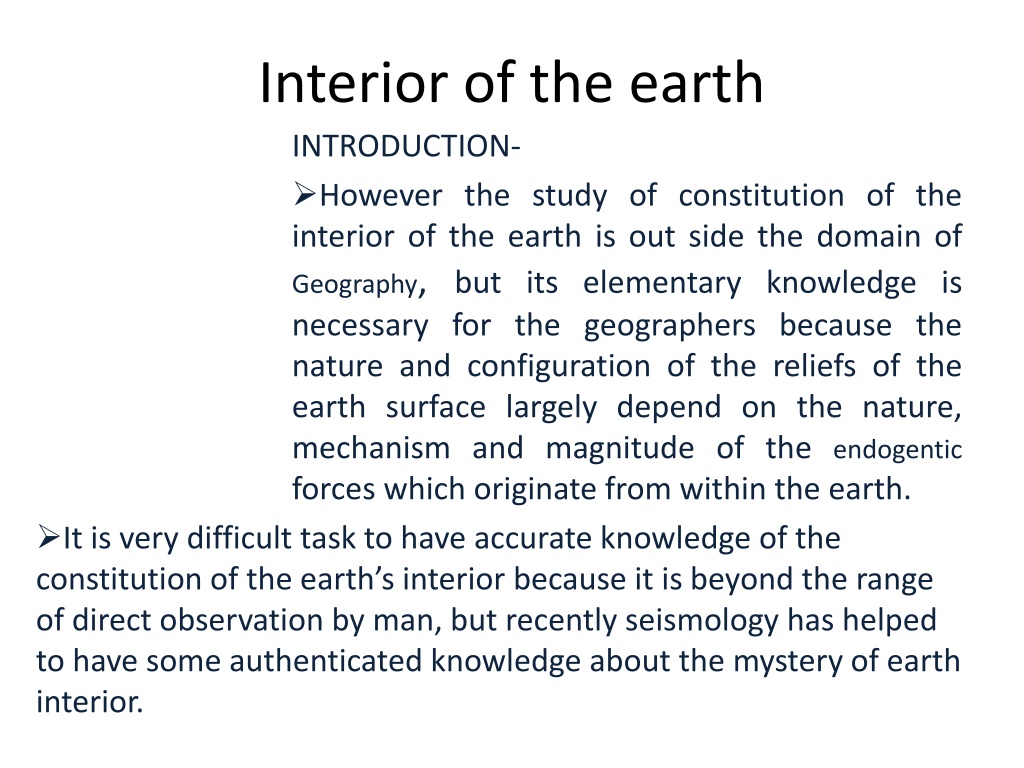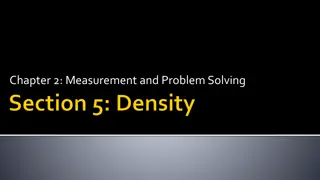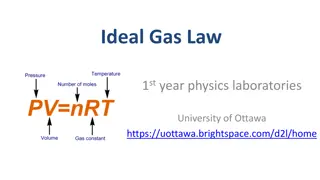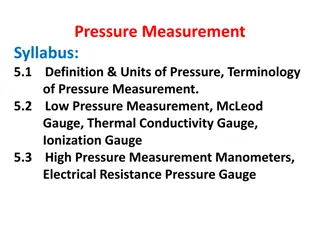Understanding the Composition of Earth's Interior: Insights from Density, Pressure, and Temperature
The constitution of the Earth's interior plays a crucial role in shaping the surface features we observe. Although direct observation is challenging, seismic studies offer valuable insights. The density, pressure, and temperature within the Earth provide essential clues to its composition. Rocks' density, superincumbent load pressure, and temperature trends with depth help infer the structure beneath our feet. The high-density core is believed to consist of heavy metallic materials like iron and nickel, indicating a complex composition. Understanding these factors is vital for geographers to comprehend the Earth's dynamics.
Download Presentation

Please find below an Image/Link to download the presentation.
The content on the website is provided AS IS for your information and personal use only. It may not be sold, licensed, or shared on other websites without obtaining consent from the author. Download presentation by click this link. If you encounter any issues during the download, it is possible that the publisher has removed the file from their server.
E N D
Presentation Transcript
Interior of the earth INTRODUCTION- However the study of constitution of the interior of the earth is out side the domain of Geography, but its elementary knowledge is necessary for the geographers because the nature and configuration of the reliefs of the earth surface largely depend on the nature, mechanism and magnitude of the endogentic forces which originate from within the earth. It is very difficult task to have accurate knowledge of the constitution of the earth s interior because it is beyond the range of direct observation by man, but recently seismology has helped to have some authenticated knowledge about the mystery of earth interior.
The sources which provide knowledge about the interior of the earth may be classified into three groups. Evidence from the theories of the origin of the earth Density Artificial sources Temperature SOURCES Pressure Like volcanic eruption Natural sources Earthquake and seismology
Artificial fact Numerous inferences can be drawn about the constitution of the interior of the earth on the basis of density of rocks, pressure of superincumbent load (lying on some thing else) and increasing trend of temperature with increasing depth inside the earth. It is commonly believed that the outer thinner part of the earth is composed of sedimentary rocks the thickness of which ranges between 0.8 km to 1.6 km. Just below this sedimentary layer there is the second layer of crystalline rocks, the density of which ranges between 3.0 and 3.5 at different places. The average density of the whole earth is about 5.5. Thus it appears that the density of the core of the earth will be, without doubt, more than 5.5. The satellite studies have revealed the following results about the density of various parts of the earth-average density of the earth= 5.517 g cm-3 , average density of the earth s surface=2.6 to 3.3g cm-3 and average density of the core=11g cm-3.
Pressure Pressure is the force applied perpendicular to the surface of an object per unit area over which that force is distributed. The standard unit of pressure is the pascal. Now question arises, what is the reason for very high density of the core? Previously it was believed that very high density of the core was because of heavy pressure of overlaying rocks. It is the common principle that pressure increases the density of rocks. Since the weight and pressure of rocks increase with increasing depth and hence the density of rocks also increasing with increasing depth. Some other evidence proved that the core must be composed of intrinsically heavy metallic materials of high density. The experiments have revealed that the core of the earth is made of the mixture of iron and nickel.
TEMERATURE It is evident on the basis of information available from the findings of bore holes and deep mining that temperature increases from the surface of the earth downward at the rate of 2 to 3 C for 100 meters. Temperature increase from the surface of the earth downward at the rate of 1 C for 32 meters. It may be pointed out that it becomes very difficult to find out the rate of increase of temperature beyond the depth of 8 km.
Evidence from the theories of the origin of the earth Various exponents of different hypotheses and theories of the origin of the earth have assumed the original form of the earth to be solid or liquid or gaseous. According to the Planetesimal hypothesis the earth was originated due to aggregation of solid dust particles. The core of the earth should be in solid state. According to tidal hypothesis the core of the earth should be in liquid state because the earth has been taken to have been formed. According to the Nebular hypothesis of Laplace the core of the earth should be in liquid state.
NATURAL SOURCES Volcanic eruption Some scientists believe on the basis of upwelling and spread of hot and liquid lava on the earth s surface during the volcanic eruption that at least such a layer below the earth s surface which is in liquid state. Such molten layer has been termed as magma chamber which supplies magma and lava during volcanic eruptions. It may be, surmised, on the basis of above connotation, that some part of the earth should be in liquid state. It, thus appears that the earth core should be in solid state. Now question arises, where hot and liquid lava come from during the volcanic eruption?
Evidences of seismology (Earthquake) Seismology is the science which studies various aspects of seismic wave generated during the occurrence of earthquakes. Seismic waves are recorded with the help of an instrument known as seismograph. It may be pointed out that seismology is the only source which provides us authenticated information about the composition of earth s interior. The place of the occurrence of an earthquake is called Focus and the place which experiences the seismic event first is called epicentre which is located on the earth surface and is always perpendicular to the focus .
On the other hand , the focus or the place of the origin of an earthquake is always inside the earth. The deepest focus has been measured at the depth of 700 km from the earth surface The different type of tremors and waves generated during the occurrence of an earthquake are called seismic waves which are generally divided into three broad categories. Like-1) Primary waves 2) Secondary waves 3) Surface waves
Types of waves and their work Primary waves also called as longitudinal or compressional wave or simply P waves, are analogous to sound wave wherein particles move both to and fro in the line of the propagation of the ray. P waves travel with fastest speed through solid materials. These also pass through liquid materials but their speed is slowed down. Secondary waves are also called as transverse or distortional or simply S waves. S waves can not pass through liquid materials. Surface waves are also called as long period waves or simply L waves. These waves generally affected only the earth surface of the earth. These waves cover longest distance of all the seismic waves. However their speed is lower than P and S waves what these are most violent and destructive
However the nature and properties of the composition of the interior of the earth may be successfully obtained on the basis of the study of various aspects of seismic waves. Mainly the velocity and travel paths of these waves while passing through a homogeneous solid body but these waves are reflected and refracted (to make a ray of light change direction when it goes through at an angle) while passing through a body having heterogenous composition and varying density zones. If the earth would have been composed of homogenous solid material the seismic waves should have reached the core of the earth in a straight path but this is not the case in reality. In fact , the recorded seismic waves denote the fact that these waves seldom follow straight paths rather they adopt curved and refracted paths. Thus it become obvious that the earth is not composed of homogenous materials rather there are variations of density inside the earth.
It is a known fact that the velocity of seismic waves changes only when there are changes in the density of rocks. On the basis of velocity seismic waves are divided into three sets of waves. 1) First set of P-S waves of maximum velocity, 2) Second set of Pg-Sg waves of minimum velocity 3) Third set of P*-S* waves of medium velocity falling between the first and the second set of waves.























